In this article, we will explore the distinctions between raised beds and elevated beds. We will discuss the concept of off-grid living and how gardening fits into this lifestyle. You will learn about the key differences between these two types of gardening structures and how they can benefit your gardening efforts. By the end, you will have a clear understanding of whether raised beds or elevated beds are the right choice for you.
Exploring the Distinctions: Raised Beds vs Elevated Beds
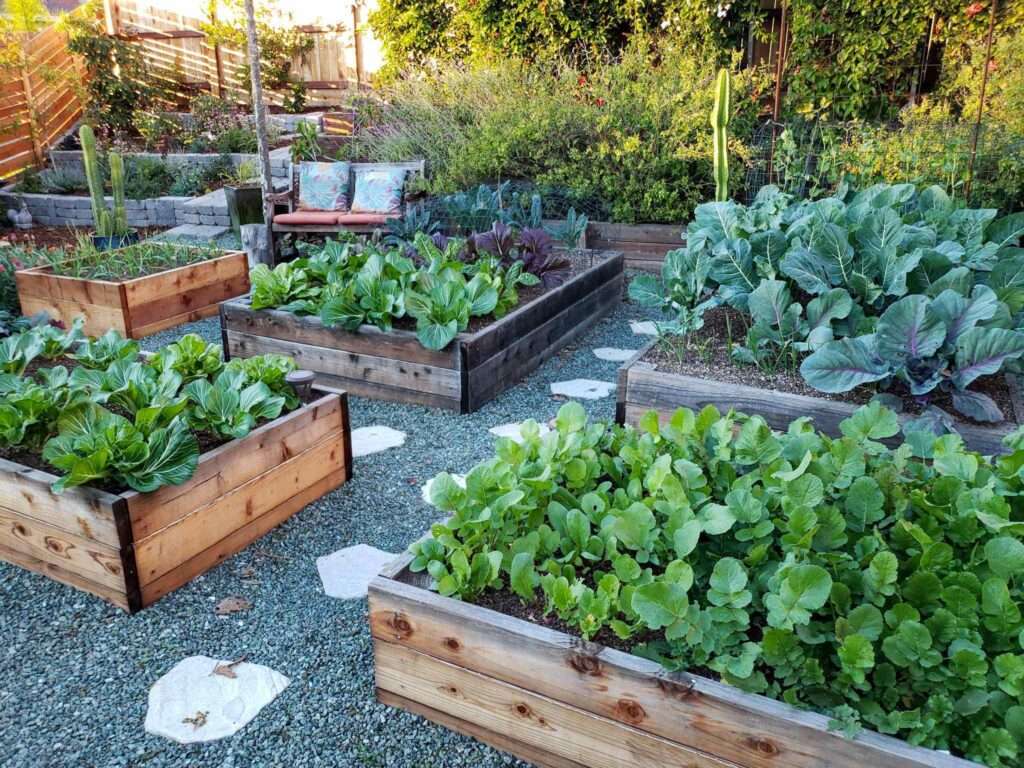
Understanding Raised Beds
What are raised beds?
Raised beds are a popular gardening technique that involves creating garden beds that are elevated above the ground level. These beds are typically built using wood, brick, or concrete materials and are filled with soil to create a contained area for growing plants.
Benefits of raised beds in gardening
Raised beds offer a multitude of benefits for gardeners. Firstly, they provide better drainage compared to traditional ground-level planting. This is especially advantageous in areas with heavy rainfall or clay soil, as excessive water can be more easily drained from the raised bed.
Another benefit of raised beds is the improved soil quality. Since the bed is filled with a specific type of soil mix, it can be customized to the specific needs of the plants being grown. This allows for better nutrient availability and promotes healthier plant growth.
Raised beds are also easier to maintain since they can be designed to be at a comfortable height for gardening. This reduces the strain on your back and knees, making it a more accessible option for gardeners of all ages and abilities.
How to build raised beds in your garden
To build a raised bed in your garden, follow these steps:
Choose the location: Select a sunny spot in your garden that receives at least 6 hours of direct sunlight per day.
Determine the size: Decide on the dimensions of your raised bed based on the available space and your gardening needs. Keep in mind that the width of the bed should be no more than 4 feet to ensure easy access to the plants from all sides.
Gather materials: Purchase or gather the necessary materials such as wood, bricks, or concrete blocks to construct the bed. Make sure the materials are untreated to avoid any leaching of harmful chemicals into the soil.
Prepare the site: Clear the area of any existing vegetation and level the ground. If necessary, use a shovel or edging tool to create a defined border for the raised bed.
Construct the frame: Assemble the materials to create the frame of the raised bed. Secure the corners with screws or nails to ensure stability.
Fill with soil: Fill the raised bed with a mixture of quality soil, compost, and organic matter. Aim for a depth of at least 12 inches to provide enough space for plant roots to grow.
Plant your garden: Once the raised bed is filled with soil, you can begin planting your desired plants. Follow the recommended spacing and planting instructions for each type of plant.
Exploring Elevated Beds
What are elevated beds?
Elevated beds, also known as elevated planters or garden tables, are raised structures with a flat surface that serves as the planting area. These beds are usually built from wood or metal and are designed to be waist-high, providing a convenient working height for gardeners.
Advantages of using elevated beds in gardening
Elevated beds offer several advantages that make them a popular choice among gardeners. Firstly, their raised height makes gardening more accessible for individuals with physical limitations, such as those with mobility issues or back problems. The elevated height eliminates the need to bend over or kneel, reducing strain on the body.
Furthermore, elevated beds can extend the growing season by warming the soil faster in the spring and keeping it warmer in the fall. The increased exposure to sunlight and improved air circulation can also promote healthier plant growth.
Elevated beds allow for better pest control since they are less likely to be invaded by ground-dwelling pests or animals. Additionally, the elevation can act as a deterrent for some larger animals, such as rabbits or deer, reducing the risk of damage to the plants.
Different types of elevated beds
There are several types of elevated beds to choose from, depending on your needs and preferences:
Waist-high garden tables: These are the most common type of elevated beds and are typically made of wood or metal. They provide a flat surface for planting and are designed to be at waist height for easy access.
Elevated planter boxes: These are similar to traditional raised beds but are designed to be taller, usually with legs or a stand. This allows for more convenient gardening without the need to bend over.
Wheelchair-accessible beds: These beds are specifically designed to accommodate individuals in wheelchairs or with limited mobility. They are built at a lower height to ensure easy access for wheelchair users.
Comparing Raised Beds and Elevated Beds
Key differences between raised beds and elevated beds
While raised beds and elevated beds share some similarities, there are key differences that set them apart.
The main distinction lies in the design and height of the beds. Raised beds are typically in-ground structures that are elevated above the surrounding ground, whereas elevated beds are freestanding structures with a flat planting surface.
Another difference is the material used for construction. Raised beds are often built using wood, brick, or concrete, while elevated beds can be made from wood or metal.
Finally, the height of the bed is a significant factor. Raised beds are typically lower to the ground and require bending or kneeling during gardening activities. In contrast, elevated beds are designed to be waist-high, eliminating the need for bending or kneeling.
Which option is better for small spaces?
Both raised beds and elevated beds can be suitable for small spaces, but the choice ultimately depends on the specific needs and constraints of your garden.
If space is a concern, raised beds may be the better option since they can be built directly into the ground. This allows for more efficient use of the available space, as the beds can be customized to fit the dimensions of the area.
On the other hand, elevated beds can also be a great choice for small spaces, especially if you have limited ground space or poor soil quality. The freestanding nature of elevated beds allows them to be placed on patios, balconies, or rooftops, making them a versatile option for urban gardens.
Considering cost factors
When it comes to cost, raised beds are generally more affordable than elevated beds. Raised beds can be built using inexpensive materials such as untreated wood or concrete blocks, making them a budget-friendly option for gardeners.
Elevated beds, on the other hand, can be more costly due to the additional materials required to construct the elevated structure. The price of elevated beds can vary depending on the size, material, and design chosen.
It is important to weigh the cost considerations against the long-term benefits and convenience provided by each option. Consider your budget and gardening goals when making a decision.
Raised Beds: Pros and Cons
Pros of using raised beds in gardening
- Improved drainage: Raised beds allow for better drainage, preventing waterlogging and root rot.
- Customizable soil: The soil mix in raised beds can be tailored to suit the specific needs of different plants.
- Easier maintenance: Raised beds are easier to maintain and weed, thanks to their contained structure.
- Better accessibility: The elevated height of raised beds reduces strain on the body, making gardening more comfortable.
- Longer growing season: Raised beds warm up faster in the spring and retain heat in the fall, extending the growing season.
Cons of using raised beds in gardening
- Higher initial cost: Building raised beds can require an investment in materials and construction.
- Limited root space: The depth of raised beds may restrict root growth for some plants, requiring regular soil amendments.
- Potential for drying out: Raised beds can dry out more quickly, requiring frequent watering in hot or dry climates.
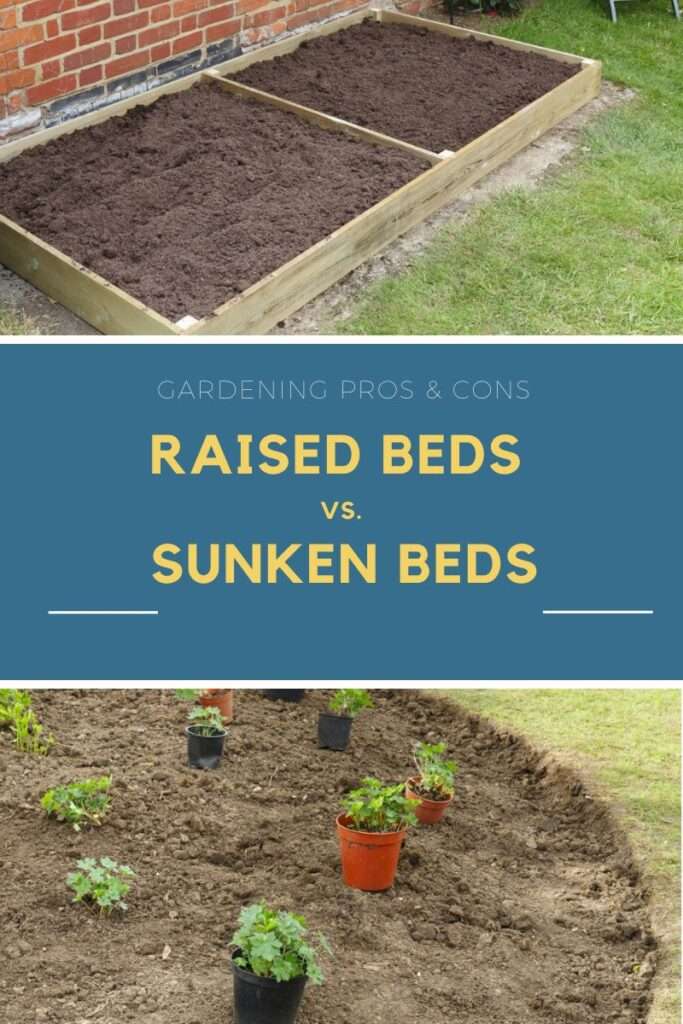
Elevated Beds: Pros and Cons
Benefits of using elevated beds in gardening
- Accessibility: Elevated beds provide a more comfortable working height, making gardening accessible for all.
- Improved soil quality: Elevated beds can be filled with high-quality soil mixtures that promote optimal plant growth.
- Enhanced pest control: Elevated beds are less likely to be invaded by ground-dwelling pests or animals.
- Longer growing season: The elevated height of the bed warms the soil faster in spring and helps retain heat in the fall.
Disadvantages of using elevated beds in gardening
- Higher cost: Elevated beds can be more expensive to purchase or build compared to traditional raised beds.
- Limited mobility: Some elevated beds may not be suitable for individuals with limited mobility, such as those in wheelchairs.
- Potential for drying out: Elevated beds may dry out more quickly, necessitating frequent watering, especially in hot climates.
Choosing the Right Bed for Your Garden
Factors to consider before choosing between raised beds and elevated beds
When deciding between raised beds and elevated beds for your garden, consider the following factors:
Space availability: Consider the size and layout of your garden and choose a bed type that fits within the available space.
Budget: Evaluate your budget and determine how much you are willing to invest in constructing or purchasing the bed.
Physical limitations: Take into account any physical constraints or mobility issues that may affect your ability to garden comfortably. Choose a bed type that accommodates your needs.
Soil quality: Assess the existing soil quality in your garden. If the soil is poor or compacted, raised beds or elevated beds offer a solution for creating optimal growing conditions.
Matching the bed type with your gardening goals
Consider your gardening goals and preferences when selecting the bed type. If you prefer the look and feel of a traditional garden, raised beds may be the better option. Conversely, if accessibility and convenience are your priorities, elevated beds provide an ergonomic solution.
Furthermore, consider the types of plants you want to grow. Some plants have deeper root systems and may require the depth of a raised bed, while others can thrive in the shallower soil of an elevated bed.
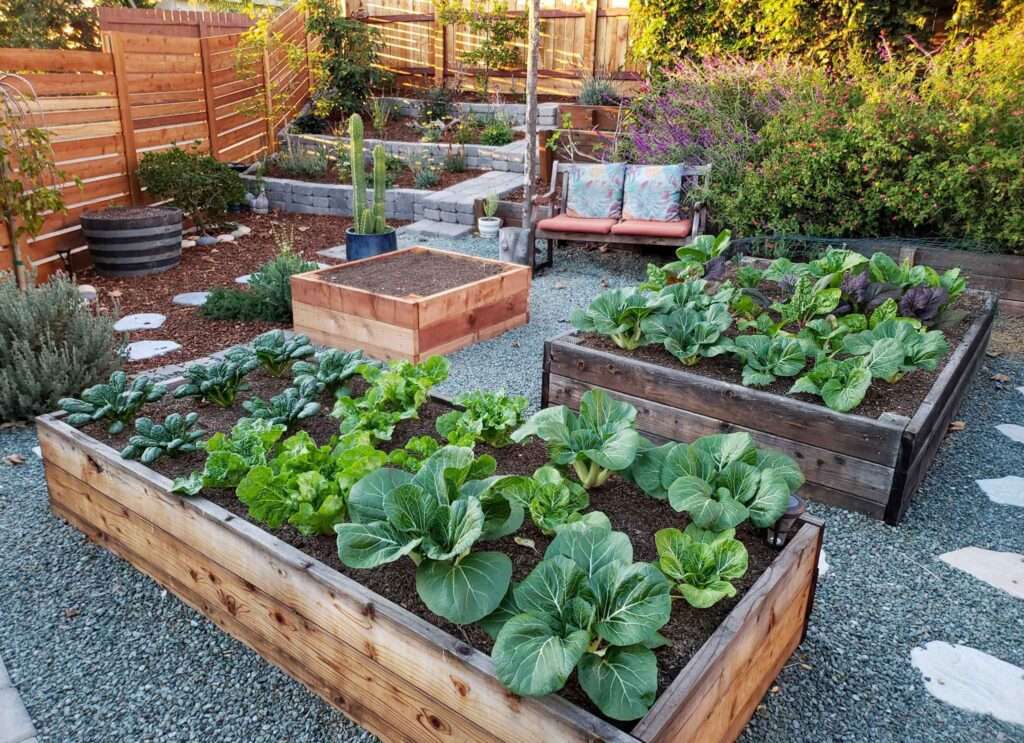
Best Practices for Raised Bed Gardening
Preparing the soil for raised beds
To prepare the soil for raised beds:
Remove any existing vegetation or weeds from the bed area.
Loosen the soil to a depth of 8-12 inches using a garden fork or tiller.
Incorporate organic matter such as compost or well-rotted manure into the soil to improve its fertility and structure.
Smooth out the surface and level the bed before planting.
Selecting the right plants for raised beds
When choosing plants for your raised bed, consider their growth habits and compatibility with each other. Follow these tips:
Select plants that have similar water and sun requirements to ensure they thrive together.
Pay attention to the height and spread of each plant to prevent overcrowding and competition for resources.
Consider companion planting, where compatible plants are grown together to provide mutually beneficial effects such as pest control or nutrient sharing.
Watering and maintenance tips for raised beds
Raised beds have specific watering and maintenance needs to keep the plants healthy:
Water deeply and thoroughly, ensuring that the moisture reaches the roots of the plants.
Use mulch to conserve moisture and suppress weeds in the raised bed.
Regularly monitor the soil moisture level and adjust watering accordingly to prevent over or under-watering.
Weed the raised bed regularly to prevent competition for nutrients and space.
Tips for Successful Elevated Bed Gardening
Preparing the foundation for elevated beds
Before placing an elevated bed:
Choose a level surface that can support the weight of the bed and the plants it will contain.
Clear the area of any debris or obstacles that may interfere with the placement and stability of the bed.
If necessary, use a level or measuring tools to ensure the bed is evenly balanced.
Choosing suitable plants for elevated beds
When selecting plants for elevated beds, consider the following:
Choose plants that are well-suited to container gardening and have compact growth habits.
Opt for dwarf or compact varieties of vegetables and flowers that won’t outgrow the limited space.
Check the soil moisture requirements of each plant and group them together accordingly to avoid over or under-watering.
Special considerations for watering and maintenance
Maintaining an elevated bed requires specific strategies:
Water the bed thoroughly, allowing the excess water to drain away. Check the drainage holes regularly to prevent blockages.
Choose lightweight or self-watering containers for the bed to reduce the overall weight and improve mobility.
Monitor the soil moisture regularly, as elevated beds may dry out faster than traditional raised beds.
Fertilize the plants regularly to replenish the nutrients in the soil, as they may be depleted more quickly due to the limited soil volume.
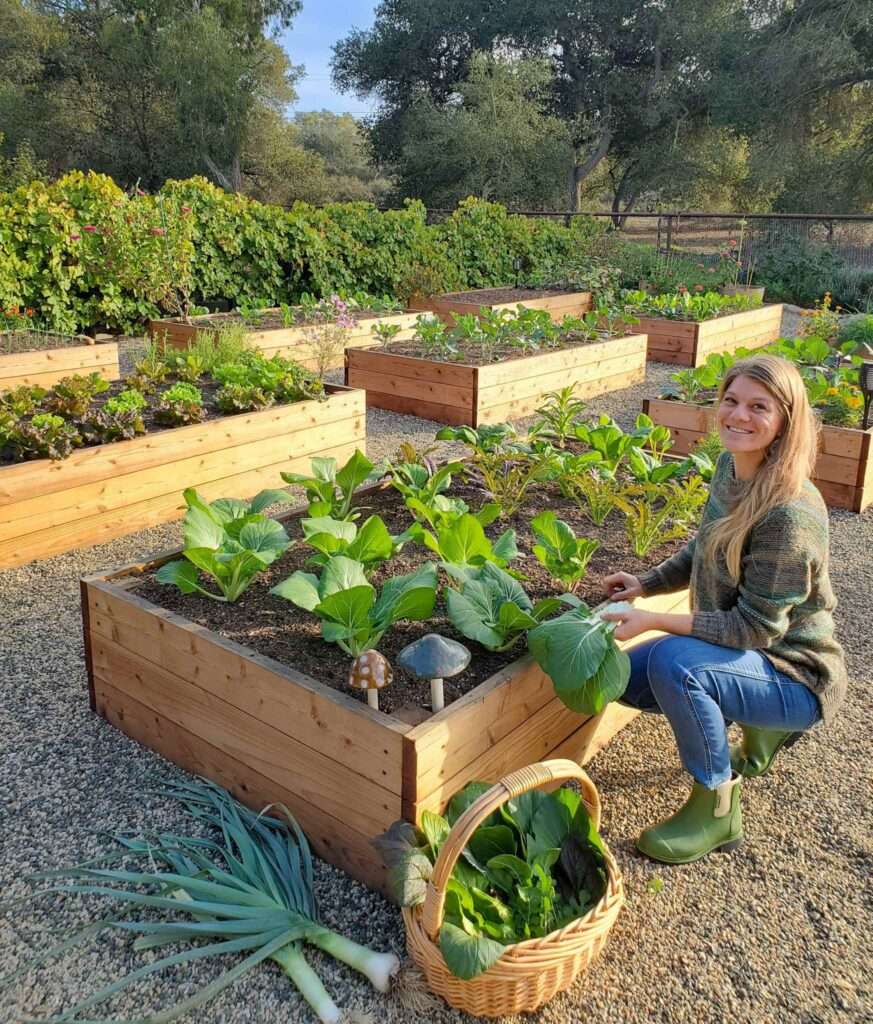
Alternative Gardening Solutions
Exploring other options for gardening in limited spaces
If raised beds or elevated beds don’t suit your needs, consider the following alternative gardening techniques:
Vertical gardening: Utilize vertical space by growing plants on trellises, fences, or walls. This is a great option for small gardens or balconies.
Container gardening: Grow plants in containers such as pots or hanging baskets. This allows for flexibility in positioning and can be ideal for apartment dwellers or those with limited outdoor space.
Hydroponics: Grow plants without soil by using a nutrient-rich water solution. Hydroponics can be done indoors or outdoors and is a space-saving technique.
Raised Beds and Elevated Beds in Off-Grid Living
Benefits of using raised beds and elevated beds in off-grid living
Raised beds and elevated beds offer various advantages in an off-grid living scenario:
Control over soil quality: In off-grid settings, where access to quality soil may be limited, raised beds and elevated beds allow for the creation of optimal growing conditions.
Accessibility: Off-grid living often requires self-sufficiency. The ergonomic design of raised beds and elevated beds makes gardening more manageable, even in challenging environments.
Efficient water usage: Raised beds and elevated beds can be designed with efficient irrigation systems, minimizing water waste and making the most of limited water resources.
Design considerations for off-grid gardening
When planning raised beds or elevated beds for off-grid living, keep the following in mind:
Opt for sustainable construction materials such as reclaimed wood or recycled metal to reduce the environmental impact.
Consider incorporating rainwater harvesting and storage systems to ensure a reliable water supply for your garden.
Explore alternative irrigation methods such as drip irrigation or sub-irrigation systems that allow for efficient water usage and reduce the need for manual watering.
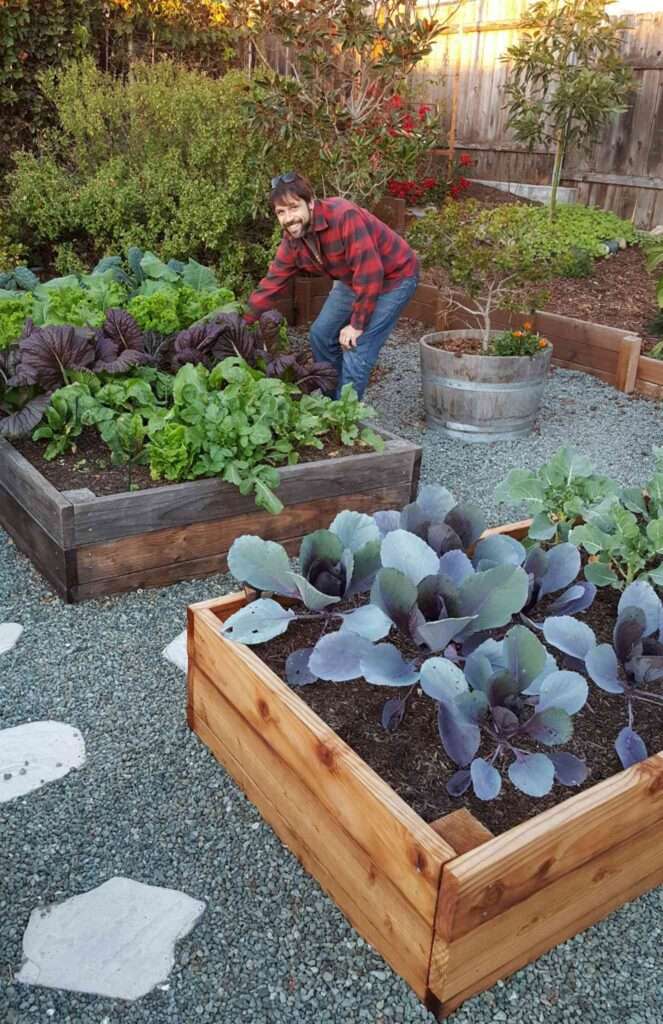
Environmental Impact of Raised Beds and Elevated Beds
Examining the ecological benefits of raised beds and elevated beds
Both raised beds and elevated beds offer several environmental benefits:
Improved soil health: By using customized soil mixes, raised beds and elevated beds can create a nutrient-rich environment that promotes healthy plant growth.
Reduced soil erosion: Raised beds and elevated beds help prevent soil erosion by keeping the soil contained within the beds.
Water conservation: Properly constructed and maintained raised beds and elevated beds can minimize water runoff and evaporation, reducing overall water usage.
Reducing water usage and conserving resources
To reduce water usage and conserve resources:
Install drip irrigation systems in raised beds or elevated beds to provide targeted watering to the plant roots. This minimizes water waste and encourages efficient usage.
Use organic mulch, such as straw or wood chips, on the surface of the beds to retain moisture and reduce the need for excessive watering.
Utilize rainwater harvesting techniques to collect and store rainwater for irrigation purposes. This is particularly beneficial in off-grid or water-limited environments.
Making a Choice: Raised Beds or Elevated Beds?
Factors to consider when making a decision
When deciding between raised beds and elevated beds, take into account the following factors:
Accessibility: Consider your physical abilities and choose the option that best suits your needs. Elevated beds may be more suitable for those with limited mobility.
Space availability: Evaluate the available space in your garden and choose the option that fits within the constraints of your environment.
Cost considerations: Assess your budget and determine how much you are willing to invest in constructing or purchasing the bed.
Functionality and gardening goals: Think about your gardening goals and preferences. Consider the types of plants you want to grow and whether they require the depth of a raised bed or the convenience of an elevated bed.
Tips for successful implementation of your chosen option
No matter which option you choose, keep the following tips in mind for successful implementation:
Soil preparation: Invest time and effort in preparing the soil properly by incorporating organic matter and ensuring good drainage.
Plant selection: Choose plants that are well-suited to the specific conditions and constraints of the bed type. Consider their water and sunlight requirements, as well as their growth habits.
Regular maintenance: Monitor the moisture levels, weed the beds regularly, and provide appropriate fertilization to ensure the optimal health and growth of your plants.
Conclusion
Reviewing the distinctions between raised beds and elevated beds
In conclusion, raised beds and elevated beds are both excellent options for gardening, each with its own unique advantages. Raised beds offer improved drainage and customizable soil quality, while elevated beds provide accessibility and increased growing season. The choice between the two depends on factors such as space availability, budget, and personal preferences.
Considering personal preferences and gardening goals
Consider your physical abilities, space availability, and budget when making a decision. Additionally, think about your gardening goals and the types of plants you want to grow. By taking these factors into account, you can choose the bed type that best aligns with your needs and helps you achieve your gardening ambitions.
Remember to follow best practices and maintain regular care to ensure the success of your chosen bed type. Happy gardening!




